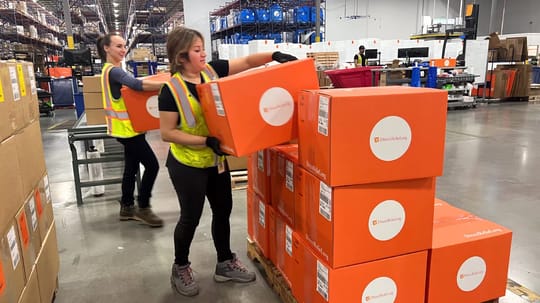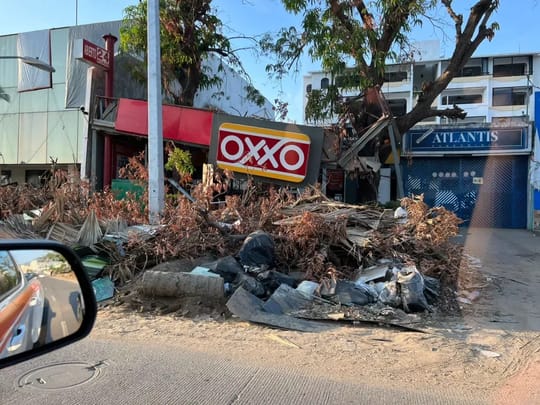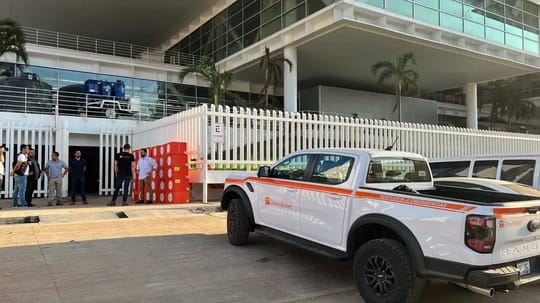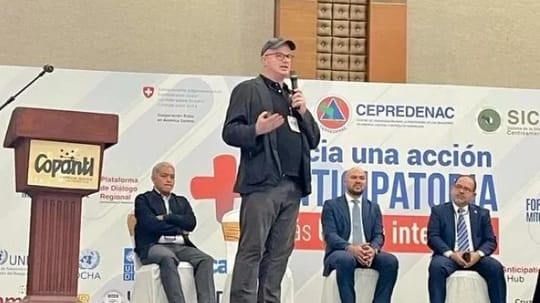Operational Update: Disaster Recovery Continues in Hawaii, Acapulco, and Morocco

Over the past seven days, Direct Relief has delivered 524 shipments of requested medical aid to 45 U.S. states and territories and 9 countries worldwide.The shipments contained 2.9 million defined daily doses of medication, including insulin, antibiotics, and cardiovascular and other chronic disease medications.
DIRECT RELIEF PROVIDES AID FOR ACAPULCO AND SURROUNDING REGION
Three weeks after Hurricane Otis swept through Acapulco and the state of Guerrero in southwest Mexico, electricity is back up and running, and most places in the region have intermittent cell phone service. Some of the beaches have been cleaned of debris, but there is still substantial damage to buildings and rubble remains.

A pile of rubble and debris, like this one in front of a ruined convenience store, are a common sight in Acapulco, Mexico. (Juan Howlet/Direct Relief)
Those who continue to be most impact by the storm’s damage are infants and older adults who don’t have the resources to leave their communities to get access to cleaner drinking water and sanitation.This week, Direct Relief staff in Acapulco met with Dr. Abel Peralta, who coordinates Mexico’s federal government-run medical campaign. The program has received volunteers from over 20 states and has conducted over 45,000 medical consultations in the past three weeks. Direct Relief gave his team 30 additional emergency medical backpacks for doctors deploying to rural areas to conduct more consultations.

Direct Relief provides 30 more emergency medical backpacks to the Secretary of Health in Acapulco. (Juan Howlet/Direct Relief)
Dr. Peralta mentioned that more donated medicine will be needed in the coming weeks, including medications for non-communicable diseases, since they are caring for a population of 800,000 people.Direct Relief is continuing to assess needs and will continue to respond to Hurricane Otis throughout the recovery phase.
MOROCCO EARTHQUAKE RESPONSE
On September 8, 2023, Morocco was struck by a powerful magnitude 6.8 earthquake. The earthquake’s epicenter occurred in the High Atlas Mountains, approximately 40-miles southwest of the densely populated city of Marrakesh. Nearly 3,000 people have been confirmed dead and approximately 5,500 suffered serious injuries. This was Morocco’s most powerful earthquake since 1960, damaging over 60,000 homes and displacing more than 500,000 people.Fortunately, the healthcare system did not sustain major damage and medical care has continued. Though the government has not made requests for international support, some local NGOs are experiencing shortages of supplies and are requesting support for mobile medical teams.
Direct Relief staff have been responding to the earthquake by coordinating responses with multiple groups, including the High Atlas Foundation, Association Amal Salè, Association Marocaine des Sages-Femmes, Bomberos Unidos Sin Fronteras, International Confederation of Midwives, and MedGlobal.This week, a four-ton shipment of vitamins, wound care products, cardiovascular medications, and other medical supplies arrived at local NGO La Fondation du Sud pour le Development et Solidarité, in coordination with the regional health services for the city of Agadir.
COMMEMORATING THE 25TH ANNIVERSARY OF HURRICANE MITCH
Direct Relief this month staff participated in the fifth Regional Platform for Anticipatory Action – Mitch +25 Forum – in San Pedro Sula, Honduras, to review progress made since Hurricane Mitch made landfall 25 years ago. The storm killed more than 11,000 people, primarily in Honduras and Nicaragua, and was the second deadliest Atlantic storm on record.The event was hosted by the Coordination Centre for the Prevention of Natural Disasters in Central America and brought together more than 200 representatives of the emergency response sector, including humanitarian agencies, risk management experts, government officials and the private sector.

Direct Relief staff presented during the event on the need and promise of mobility data in disaster readiness and response efforts. Andrew Schroeder, Direct Relief’s vice president of research and analysis, compared mobility data for Hurricane Ian and Hurricane Otis, emphasizing how mobility data from sources like Data for Good at Meta allow response teams to evaluate evacuation dynamics, resource overload, and demographic vulnerability in near real-time.
OPERATIONAL SNAPSHOT
WORLDWIDE
This week, Direct Relief shipped 1.3 million defined daily doses of medication outside the U.S.
Countries that received medical aid over the past week included:
- Lebanon
- Paraguay
- India
- Haiti
- Syria
- Panama
- Marshall Islands
- Iraq
- Tanzania
Direct Relief also issued a $25,000 grant to Mountain Heart Nepal, a long-standing partner of Direct Relief, to support their emergency response efforts after a magnitude 5.6 earthquake struck the western region of Nepal. Funds from Direct Relief will enable the deployment of a 10-person medical team to the earthquake impacted areas.
UNITED STATES
Direct Relief delivered 476 shipments containing more than 16.1 tons of medications over the past week to organizations, including the following:
- Welvista, South Carolina
- NC MedAssist, North Carolina
- St. Vincent de Paul Pharmacy – Dallas, Texas
- CommunityHealth, Illinois
- Community Care Center, North Carolina
- UNC Health Care, North Carolina
- Volunteers in Medicine Hilton Head Island, South Carolina
- ODA Quality Health Center, New York
- San Jose Clinic, Texas
- Lloyd F. Moss Free Clinic Pharmacy, Virginia
YEAR-TO-DATE (GLOBAL)
Since January 1, 2023, Direct Relief has delivered 19,300 shipments to 2,413 healthcare providers in 55 U.S. states and territories and 86 countries.
These shipments contained 490.4 million defined daily doses of medication valued at $1.9 billion (wholesale), totaling 5.8 million lbs.